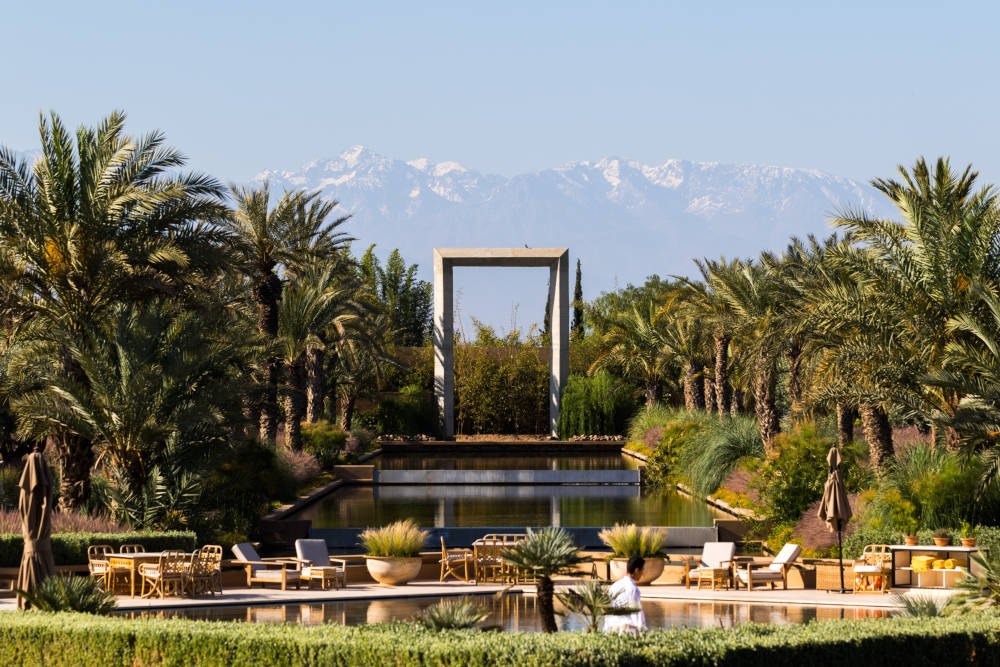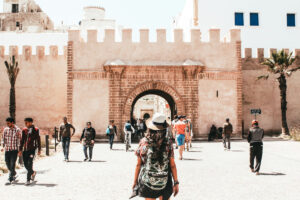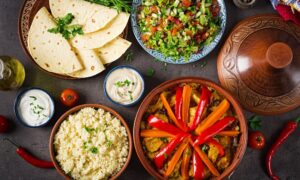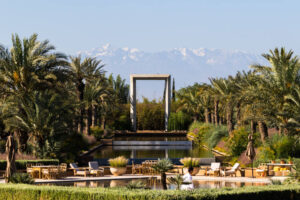Marrakech is one of the four imperial cities of Morocco. It was established in 1070 as the capital of the Almoravid Empire. Over time, the city has witnessed significant construction projects and historical events. Today, Marrakech is an alluring city that blends its historical heritage with modern charm.
The city’s old medina, with its narrow alleyways and winding streets, can make you feel like you’re wandering through a maze. The city landmarks will leave you in awe of the beauty of Moroccan architecture. Not to mention the historical gardens, some of which date back to the 12th century.
Although the city has plenty to offer, here are the ten most captivating places to visit in Marrakech.
The Saadian Tombs
The Saadian Tombs is a royal necropolis that houses the remains of the royal family of the Saadian dynasty that ruled Morocco between 1549 and 1659. Today, the site is a primary tourist attraction in Marrakech City. According to many art historians, the tombs represent the high point of Moroccan decor and interior design.
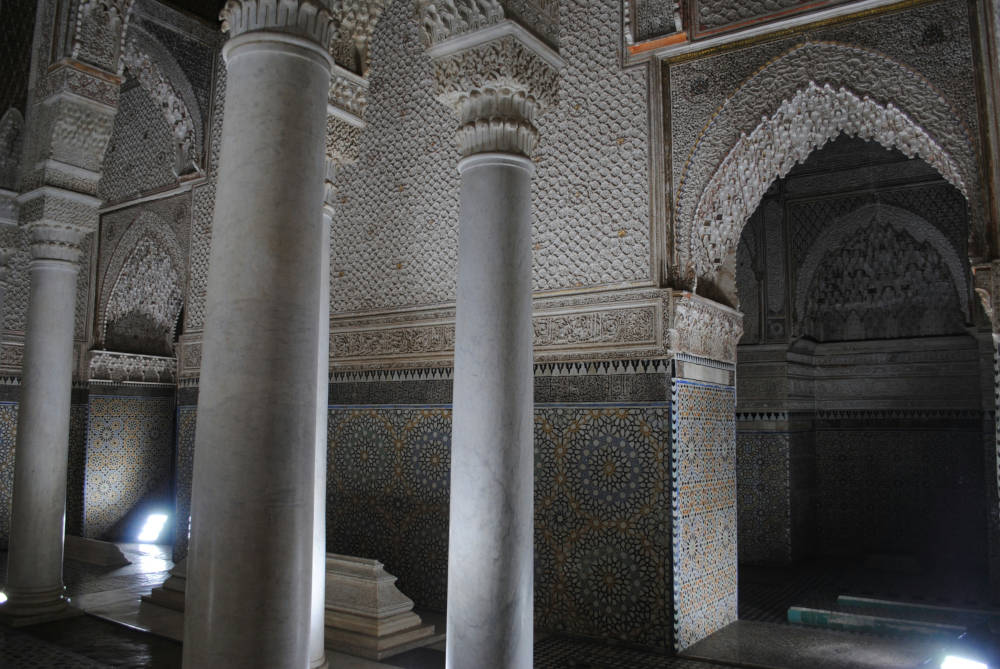
The graveyard dates back to the 14th century, but it was not until the reign of The Saadi sultan Ahmed al-Mansour (1578-1603) that the royal necropolis reached its luxurious status. During his reign, the burial ground was adorned and widened. The sultan built two more majestic mausoleums for his parents, his own descendants, and himself. The sultan’s tomb (also known as the Hall of Twelve Columns) was embellished with imported Italian Carrara marble and gilding “muqarnas,” a decorative vaulting in Islamic architecture that resembles a honeycomb.
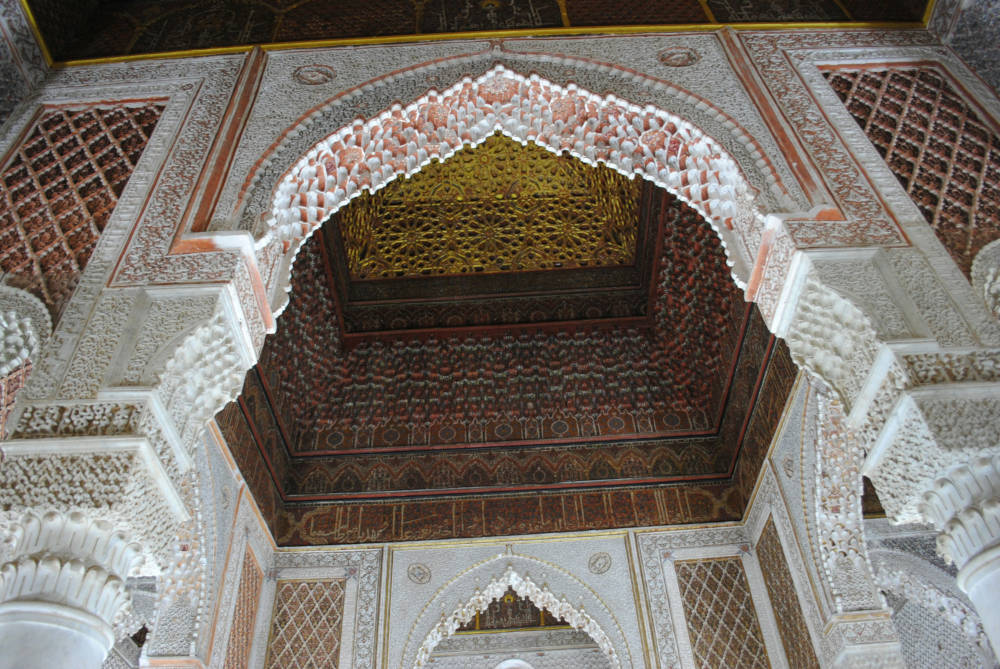
If you want a taste of the beauty of Morocco’s decor and interior design, we recommend you visit this magical site. It’s located near the Kasbah Mosque and within walking distance of Jamaa al-Fnaa Square. The site is open daily from 9 am to 5 pm and costs 70 Moroccan dirhams (less than 8 US dollars).
For tickets: Saadian Tombs
The Bahia Palace
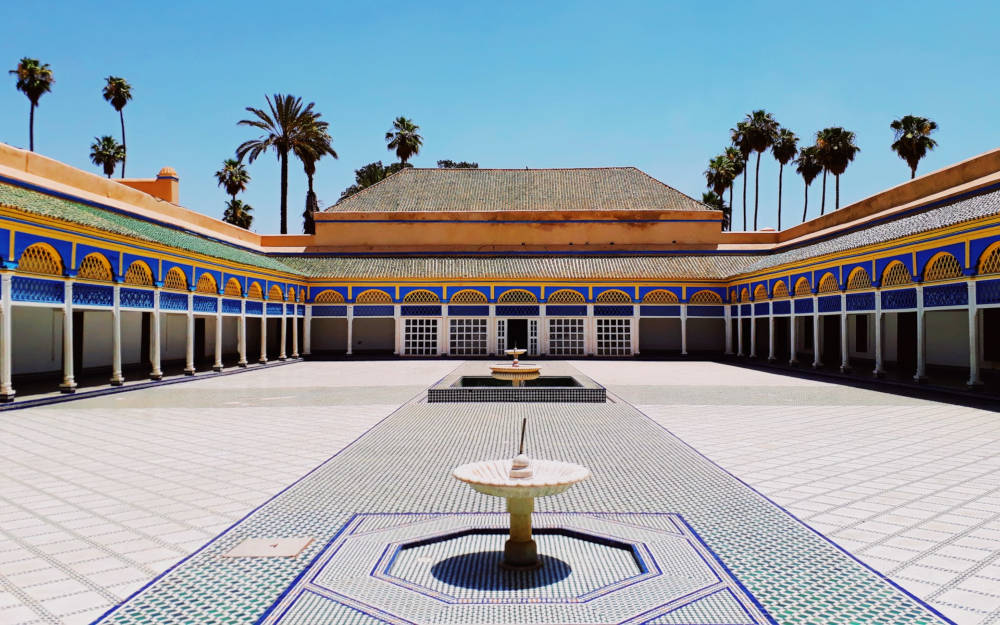
Not far from the Saadian Tombs stands the Bahia Palace, another striking example of Moroccan architecture and design. It’s a paramount tourist attraction in Marrakech that you can’t miss while visiting the city.
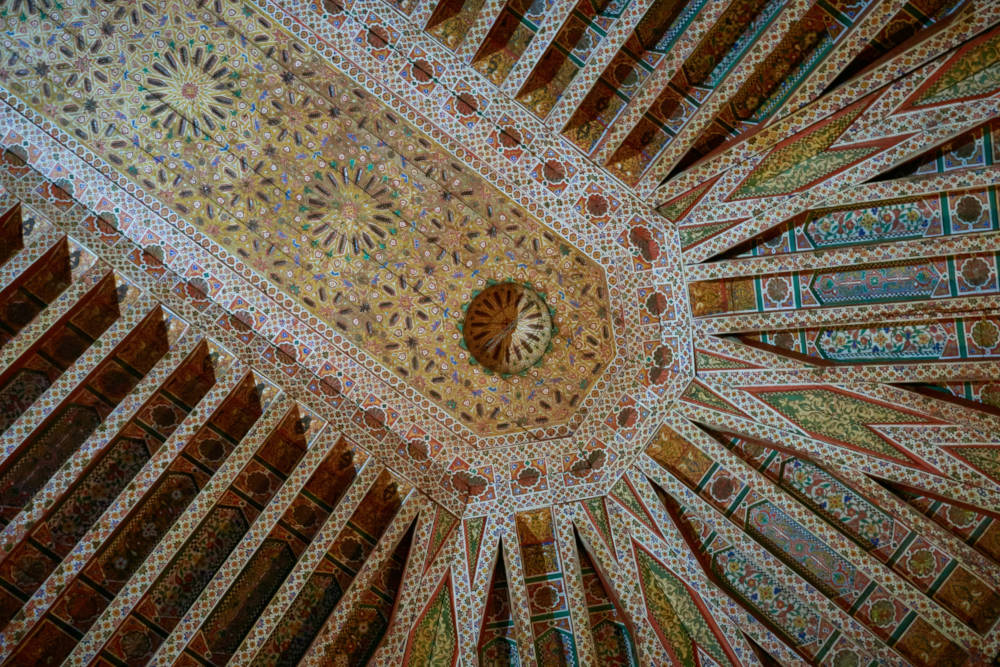
The palace was built in 1959 by Si Musa, the grand vizier of the Alaouite sultan. Later, after Si Musa’s death, the palace was passed on to his son, Si Ba Ahmed ibn Musa, the succeeding grand vizier. The latter expanded and embellished the palace between 1894 and 1900 to accommodate his harem and servants. The renovation and beautification gave the palace an extravagant status and made it one of the most prominent architectural projects in Moroccan history.
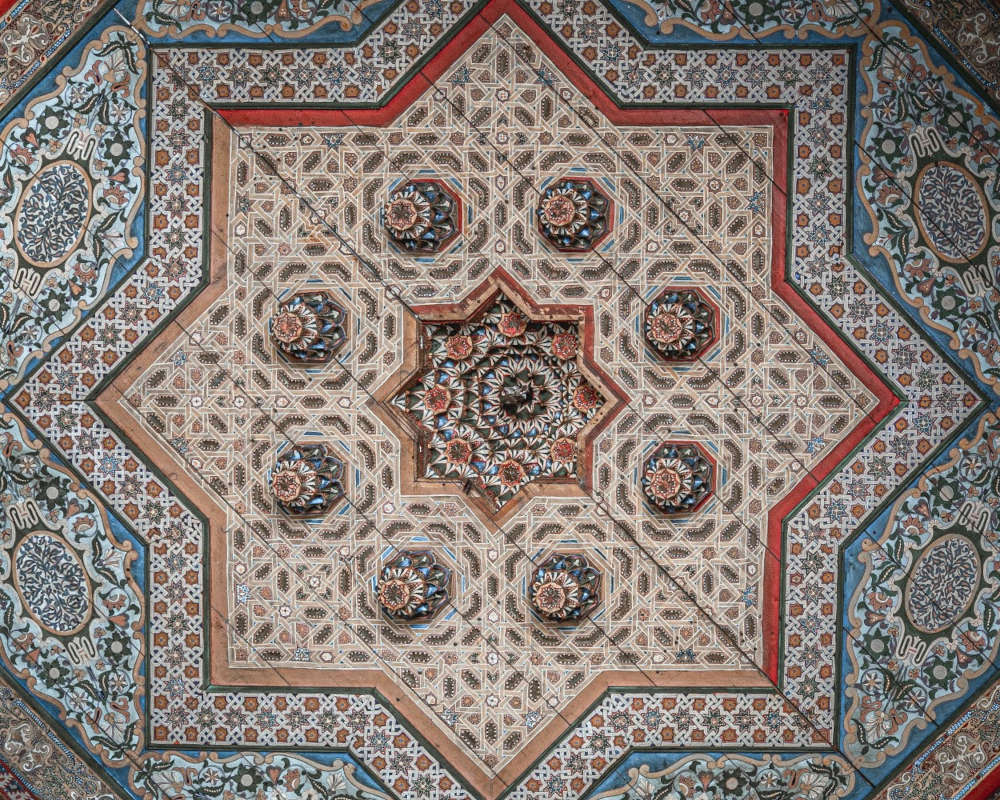
The palace contains the Small Riad (Petit Riad), the Grand Riad, the Small Courtyard, and the Grand Courtyard (also known as Cour d’Honneur in French). The last represents the highlight of the palace. It’s a 1500-square-meter courtyard paved with Italian Carrara marble, encircled by a colorful wooden gallery.
For entrance: The site is open daily from 9 am to 5 pm and costs 70 Moroccan dirhams (less than 8 US dollars).
For tickets: Bahia Palace
Majorelle Garden (also known as Jardin Majorelle in French)

Majorelle Garden is another stunning tourist attraction in the city of Marrakech. The garden ranks as Morocco’s most visited attraction, with almost a million visitors each year, according to the Washington Post, 2019. It lies over 9000 square meters (about 2.2 acres). It features 300 plant species from five continents, art sculptures, a cubic villa, and the Berber Museum, showcasing objects of Amazigh/Berber (indigenous people of Morocco) culture and art.
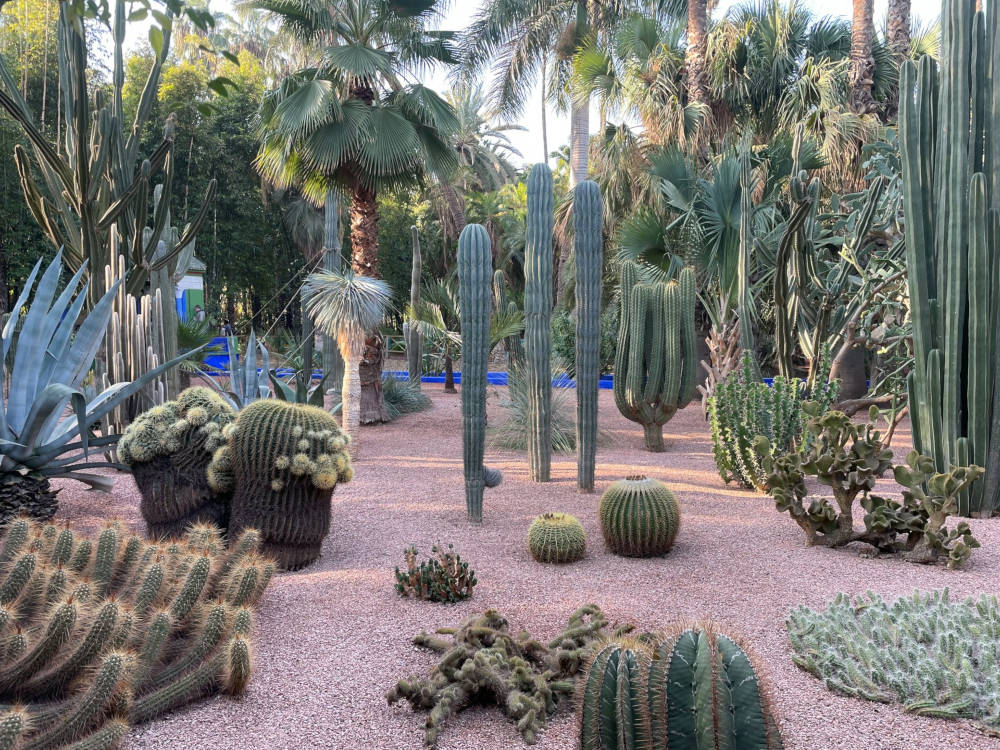
The garden was first established over the course of forty years, starting in 1922, by the French Orientalist artist Jacques Majorelle. It was home for him and his wife until their divorce in 1950. Majorelle put his blood and sweat into taking care of the garden. He once said: “This garden is a momentous task to which I give myself entirely. It will take my last years from me, and I will fall, exhausted, under its branches after giving it all my love.”
In 1960, due to his deteriorating health, he had to return to France. After Majorelle passed away in 1962, the garden was neglected. It wasn’t until 1980 that fashion designers Yves Saint-Laurent and Pierre Bergé bought the garden to restore it and make it accessible to the public.
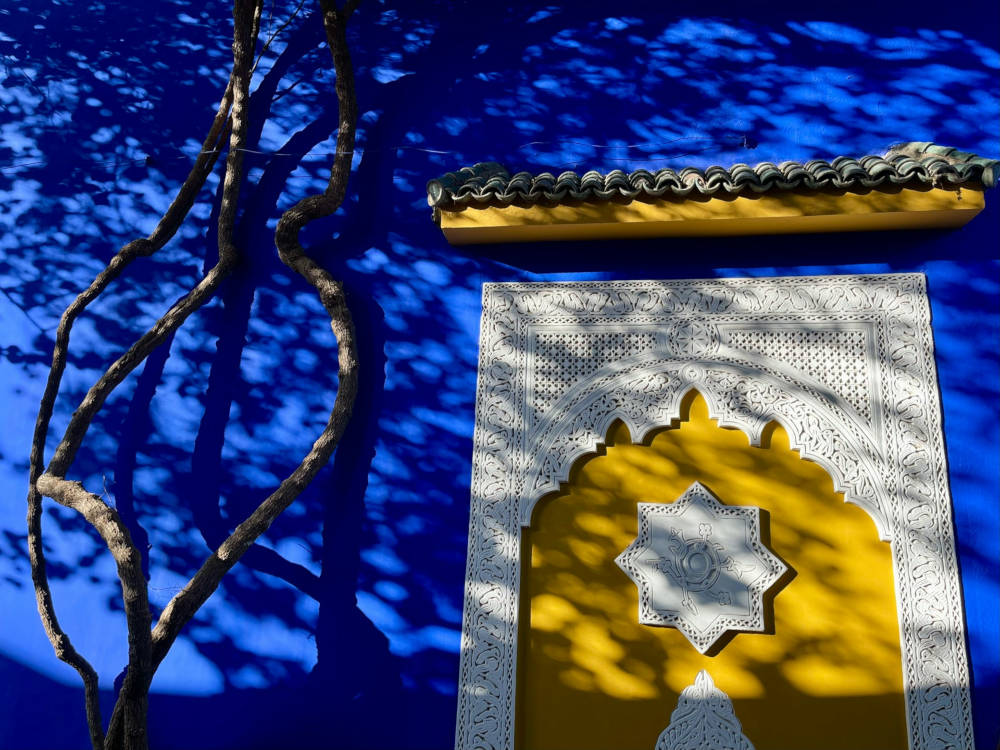
Today, the garden is run by the Jardin Majorelle Foundation and attracts art appreciators from all over the world. For entrance, the garden is open daily from 8:30 am to 6 pm and costs 70 Moroccan dirhams (less than 8 US dollars).
For tickets: Majorelle Garden
The Mellah (or the Jewish Quarter)
Throughout the years, many Jewish people have chosen to live in Morocco, and the word ‘Mellah’ refers to their residential quarters in different Moroccan cities, including the one in Marrakech. The Mellah in Marrakech was built in 1558 by decree of the Sultan Abdallah al-Ghalib of the Saadian dynasty. In the 17th century, It became a primary commercial district in the city. In the 1940s, its population rose to its peak, 40,000 residents. Since 1960, the Jewish residents have left for Israel, France, and Montreal. Today, Muslims occupy the Mellah and run the guest houses and shops.
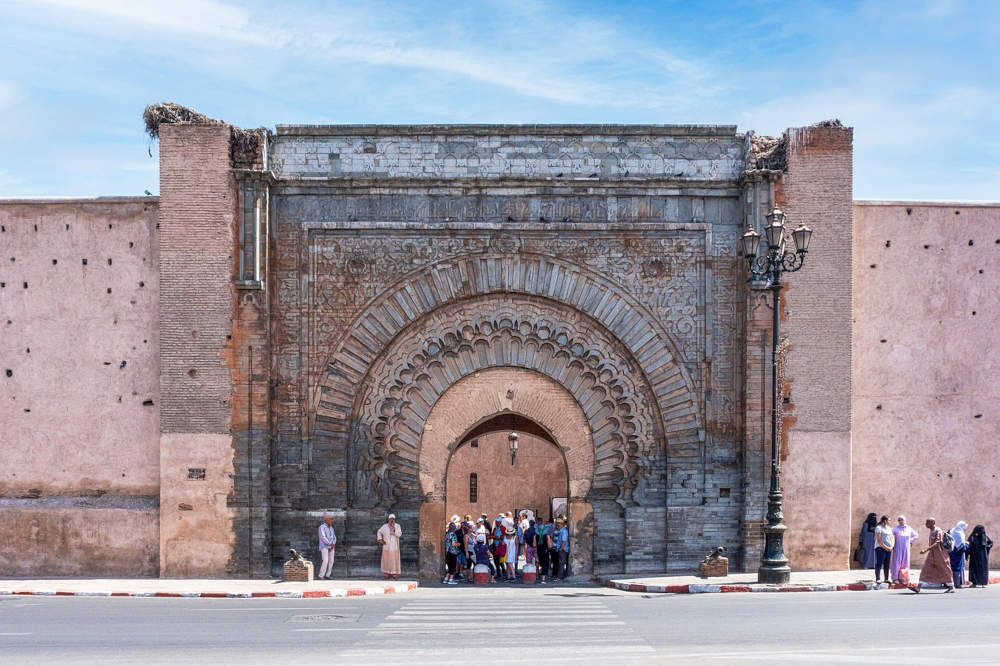
The Mellah is located south of the old town (medina) near the Badi Palace. It’s a walled residential quarter with two main entrance doors. It has been restored many times over the years. The tight alleyways offer a warm historical atmosphere featuring a mixture of two religions. If you go there, you must check out the colorful spice souk (market), the jewelry souk, the fabric souk, and the craftsmen shops. You can also socialize with the locals, as most go there for groceries.
Madrasa Ben Youssef (or School Ben Youssef)
Madrasa Ben Youssef is an Islamic school named after the adjacent Ben Youssef Mosque. It was founded in the 14th century by the Marinid Sultan Abu Inan Faris as a religious school offering Islamic teachings to scholars. It also served as a library and a mosque and was once the largest Islamic school in North Africa. The Madrasa Ben Youssef has been expanded and restored twice, first in the 16th century by the Saadi Sultan Ahmed al-Mansour and again in the 19th century by the Alaouite Sultan Hassan I.
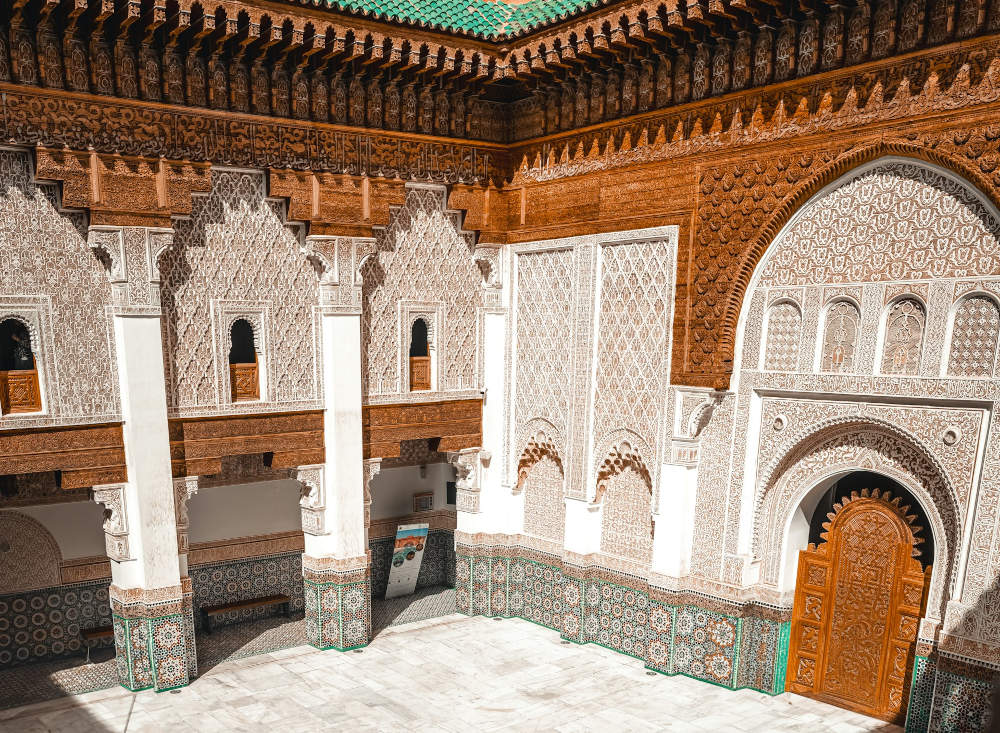
Today, the madrasa is a tourist attraction and a UNESCO World Heritage Site. It features the beauty of the luxurious Moroccan architecture. It’s an authentic architectural masterpiece reflecting the craftsmanship of Moroccan artisans. Upon visiting it, the elaborate courtyard, decorated with zellige, marble, wood, and gypsum, and the towering walls will leave a lasting impression.
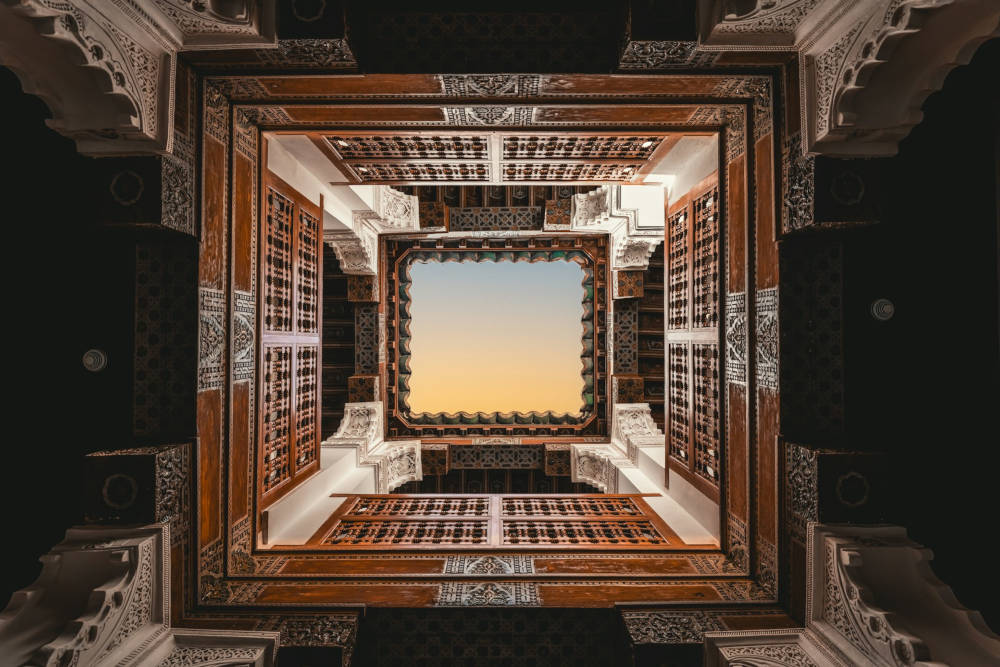
For entrance: Madrasa Ben Youssef is open daily from 9 am to 6 pm and costs 70 Moroccan dirhams (less than 8 US dollars).
For tickets: Madrasa Ben Youssef
Marrakech Museum
Marrakech Museum showcases a collection of historical objects and art forms from Morocco. It’s located in the old medina and held at the Dar Mnebhi Palace. The museum attracts tourists eager to discover Morocco’s flourishing history. Some go there for that same reason, while others go there to enjoy the architectural beauty of the palace itself. We recommend you do both.
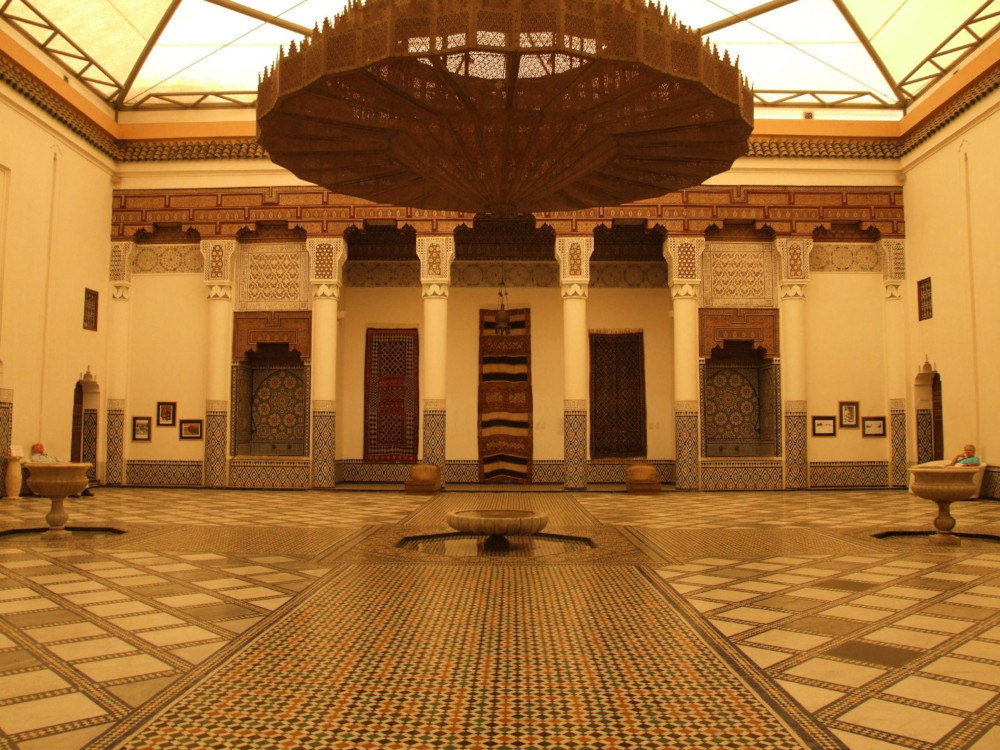
The Mnebhi Palace was built in the early 20th century by Mehdi Mnebhi, a former minister of defense (1900-1908). Later, as Mehdi Mnebhi served as an ambassador for the Moroccan state in London, the palace was taken over by Pasha Glaoui, a French autocrat. After Morocco’s independence in 1956, the Moroccan government seized the palace and turned it into a girl’s school in 1965. Years later, and after a rigorous restoration, the palace has become the house of Marrakech Museum since 1997.
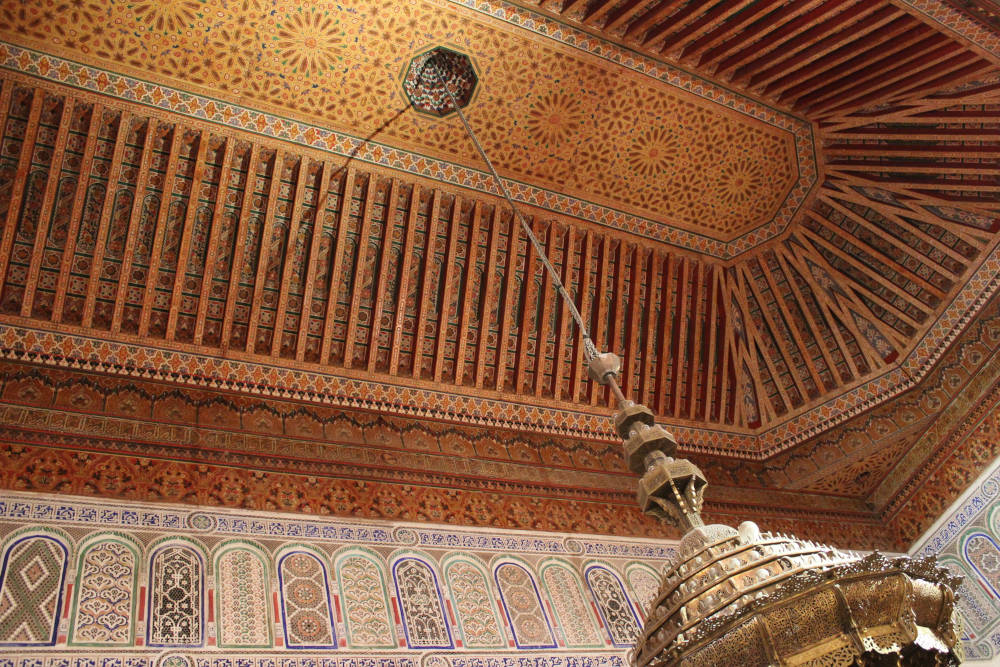
The Dar Mnebhi Palace features the elegance of contemporary Moroccan architecture. In the center of the palace is an entirely paved and roofed-over courtyard, which once was an open riad garden. The courtyard features several well-embellished fountains and a large central ornate brass chandelier. The courtyard’s floor and walls are decorated with colorful Moroccan tiles (zellige). The exhibition rooms are also garnished with stucco, wood, and fez zellige.
For entrance: The museum is open daily from 9:30 am to 6:00 pm and costs 70 Moroccan dirhams (less than 8 US dollars).
For tickets: Marrakech Museum
Jamaa al-Fna Square
Jamaa al-Fna is the main square and the heart of Marrakech. It comprises a square and a central marketplace (souk) in the old medina. It’s the liveliest square in Morocco and on the African continent and one of the most dynamic squares in the world. Historically, the square came to life not long after the city of Marrakech was founded in the 11th century. It has been active since then as a food market, as Berber (indigenous people) traders would travel down the mountains to sell their produce in the city.
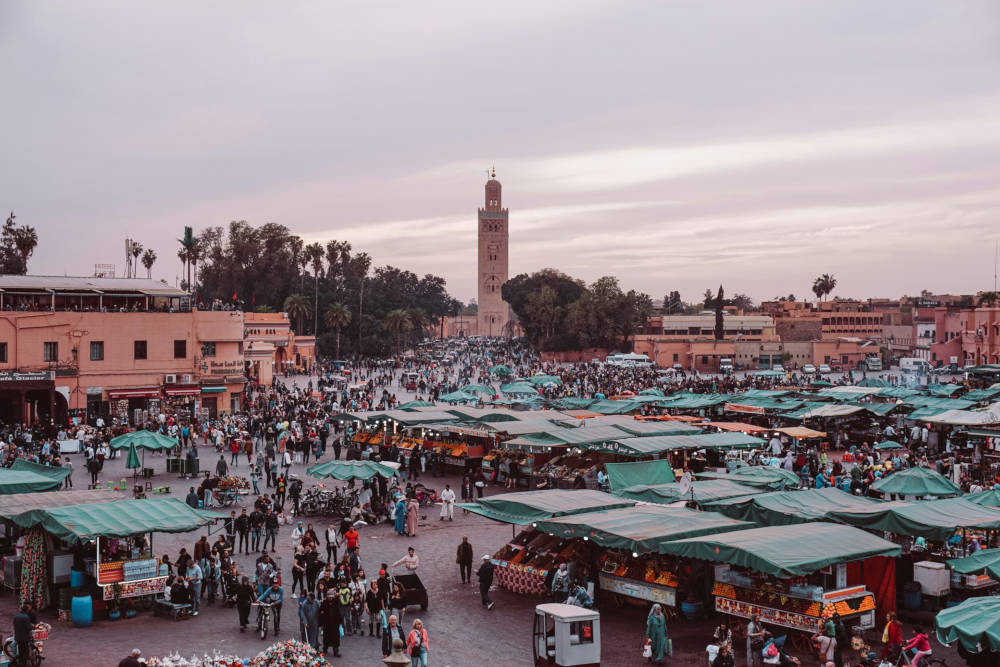
Along with food selling, many storytelling and street theatre acts took place. Today, the square is reserved for entertainment and local food and juice stalls. In 2001, the square was declared by UNESCO a Masterpiece of the Oral and Intangible Heritage of Humanity.
Many interpretations have been given to the name of the square. The word “Jamaa” means “mosque” or “gathering/assembly” in Arabic, while the word “al-Fna” means “death/extinction,” “ruin,” or “open area.” Some people translate the phrase “Jamaa al-Fna” to “Assembly of the Dead,” which they link back to the public executions that took place at the square around 1050.
Modern historians, however, claim that the phrase means “Mosque of Ruination.” They attribute this to the unfinished “Jamaa al-Hna” (or Mosque of Tranquility) that Ahmed al-Mansur began constructing in the middle of the square in the 16th century. Due to uncertain causes, construction works were stopped and the mosque was never completed. Then, people ironically started calling it Jamaa al-Fna (Mosque of Ruination) instead of Jamaa al-Hna (Mosque of Tranquility).
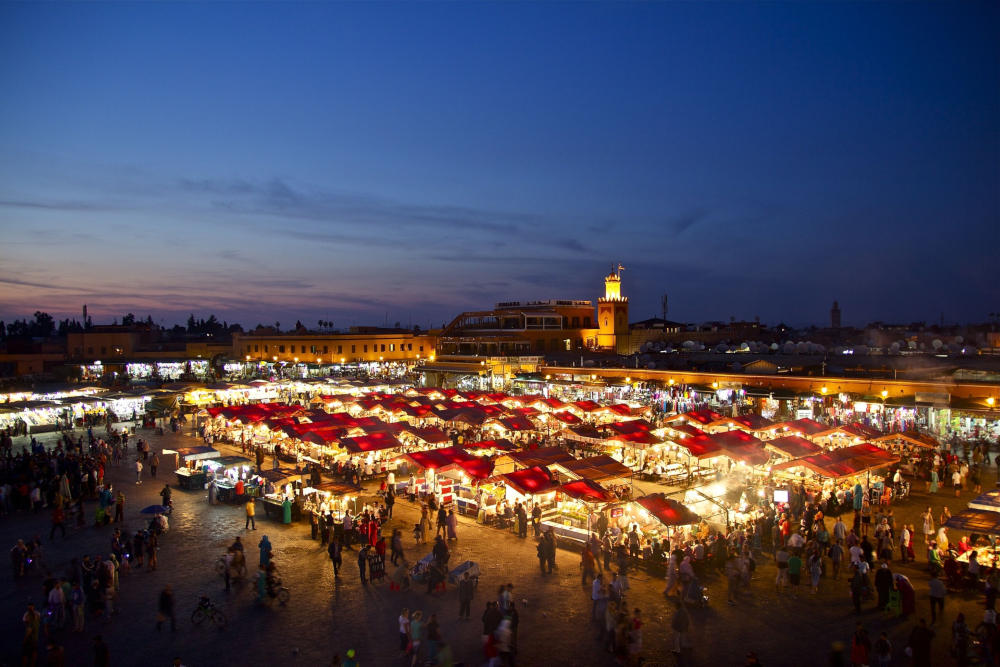
During the daytime, the square seems to be dull and empty. However, orange juice stalls, snake charmers, and henna tattoo artists can still be found. At sunset, the square starts to get crowded in preparation for the show to kick off. It’s only at night that you can fully experience the square, as Berber and Gnaoui musicians play their beautiful music, and food stalls offer the best Marrakshi food. When you’re in Jamaa al-Fna, you can also check out the 12th-century Koutoubia Mosque, buy souvenirs from the adjacent old market, try a horse-drawn carriage tour in the city, or wander across the narrow alleys of the old medina.
Rooftop restaurants

When you visit Marrakech, you must go to a rooftop restaurant, especially in the summer. This is a breathtaking experience you don’t want to miss. Eating delicious food with a view of the red medieval medina is an ever-lasting impression that you can’t get anywhere. It’s an opportunity to soak in the historical atmosphere of the city.

Restaurants offer diverse options of foods ranging between traditional Moroccan dishes and international dainties. They are calm and provide a charming, romantic ambiance. You can also enjoy a gorgeous sunset view if you go there in the evening. There are plenty of options, and we guarantee that any restaurant you choose will surpass your expectations.
Souk Semmarine (or Semmarine Market)
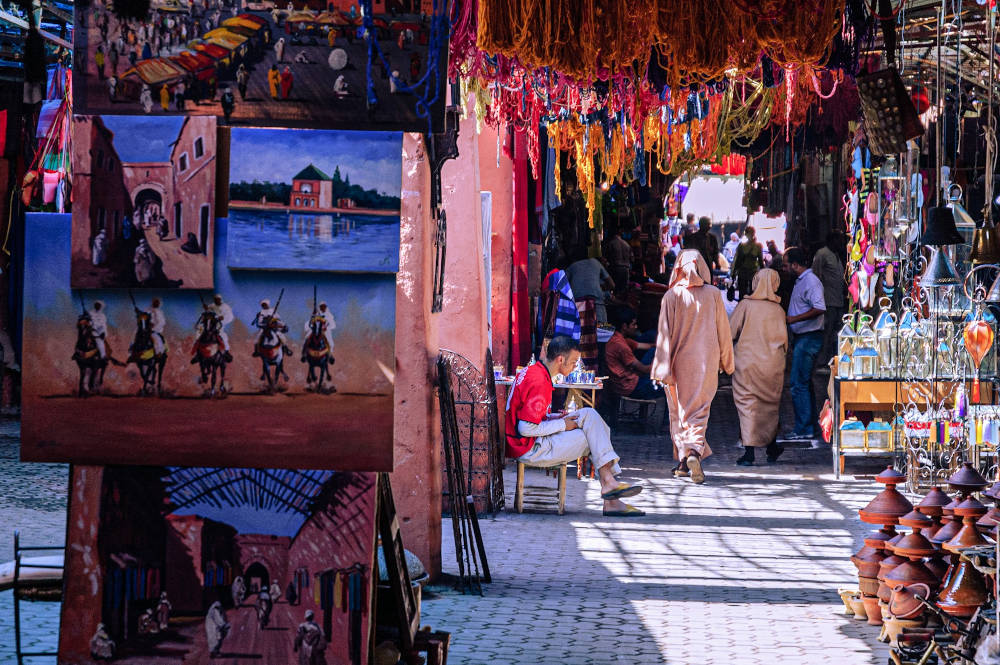
One of the highlights of your visit to Marrakech will be exploring Souk Semmarine, the city’s largest and most renowned souk district in Morocco. It stretches from Jamaa al-Fna to Madrasa Ben Youssef and connects with other souks in the old medina. This souk district is home to a variety of smaller souks specializing in different crafts, such as spices, carpets, lanterns, sweets, textiles, ceramics, and more. You basically can find anything you need to shop for in these souks.
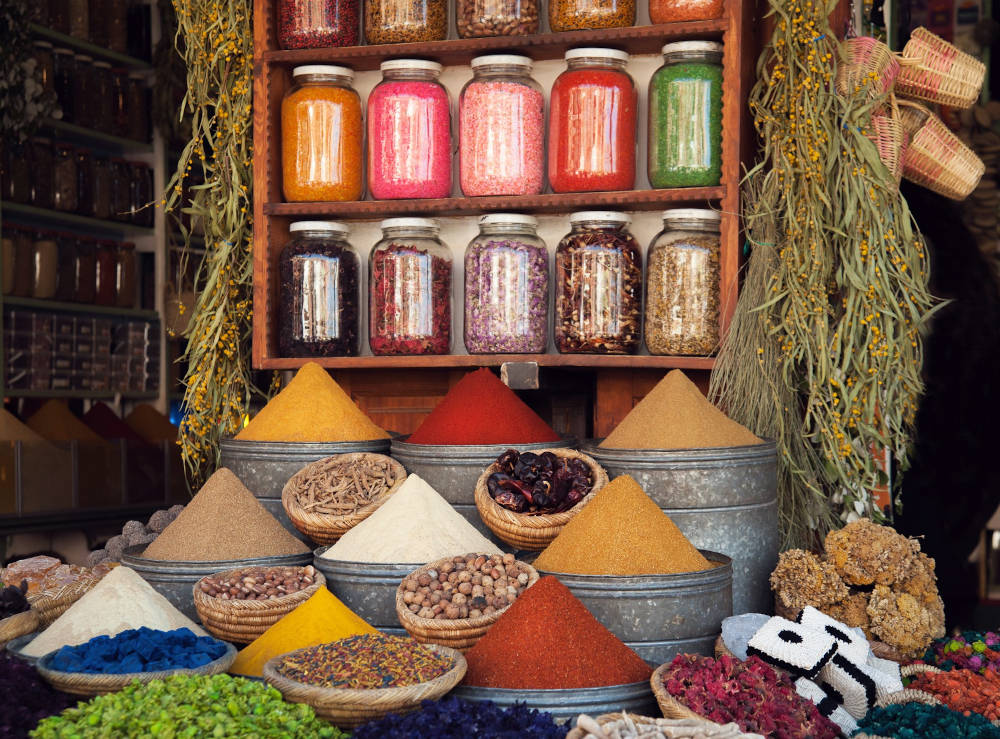
Shopping in this place can be overwhelming, especially for a foreigner. You may find yourself the center of attention, as most vendors will try to convince you to buy from them. However, if you decide to make a purchase, don’t forget to negotiate as hard as possible to get a good deal. This is a common practice in Moroccan culture, so feel free to haggle for better deals when purchasing souvenirs from shops or stalls.
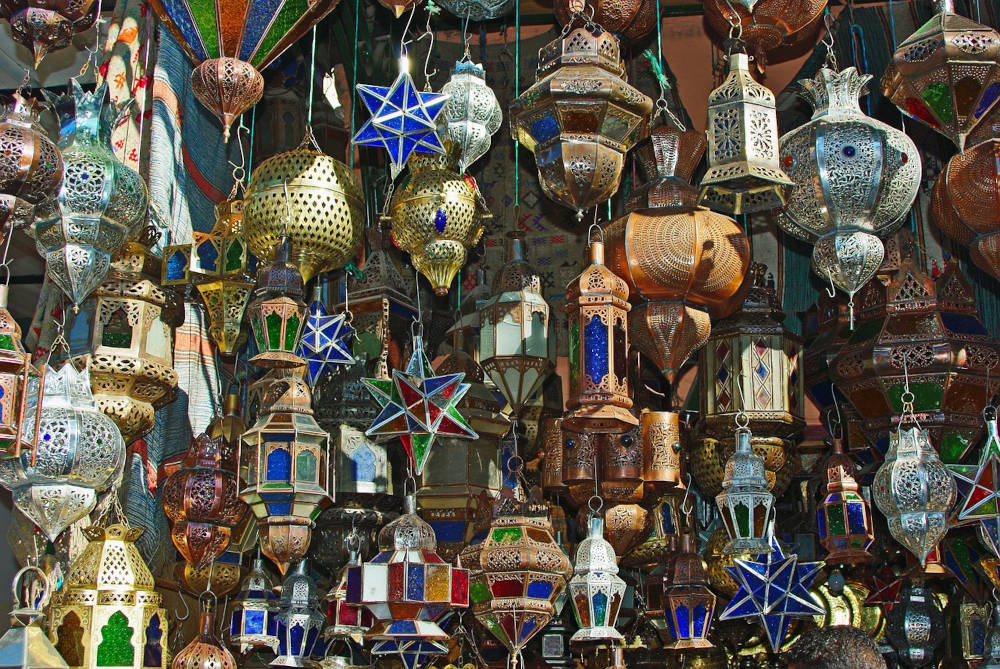
Marrakshi vendors are extremely friendly and will always try to make you laugh. Some might offer food samples, such as dried fruits or Moroccan sweets. If you get hungry while exploring the souk, we recommend Chez Lamine Hadj Mustapha Restaurant for some deliciously cooked beef or lamb meat. The owner, Hadj Mustapha, used to work as a cook for the Moroccan royal family.
The souk is open daily from 9 am to 9 pm.
Traditional Riads
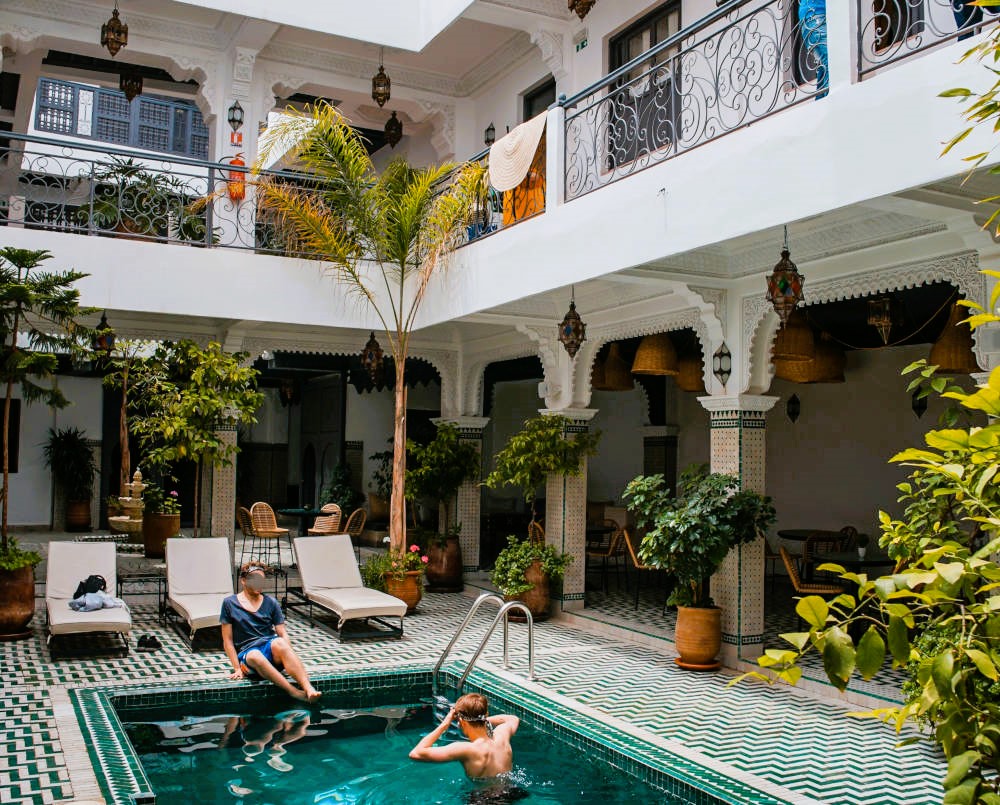
The word “riad” comes from Arabic and means “garden”. Riads are traditional houses located in the old medina of Marrakech. They are known for their central courtyard, which features an open ceiling. Nowadays, many riads have been transformed into hotels while still preserving their historic charm. The courtyard of a riad can feature a central fountain, a swimming pool, a garden, or a combination of all three. The courtyard’s floor is usually paved with marble and Moroccan zellige tiles, while the walls are adorned with gypsum and carved wood.
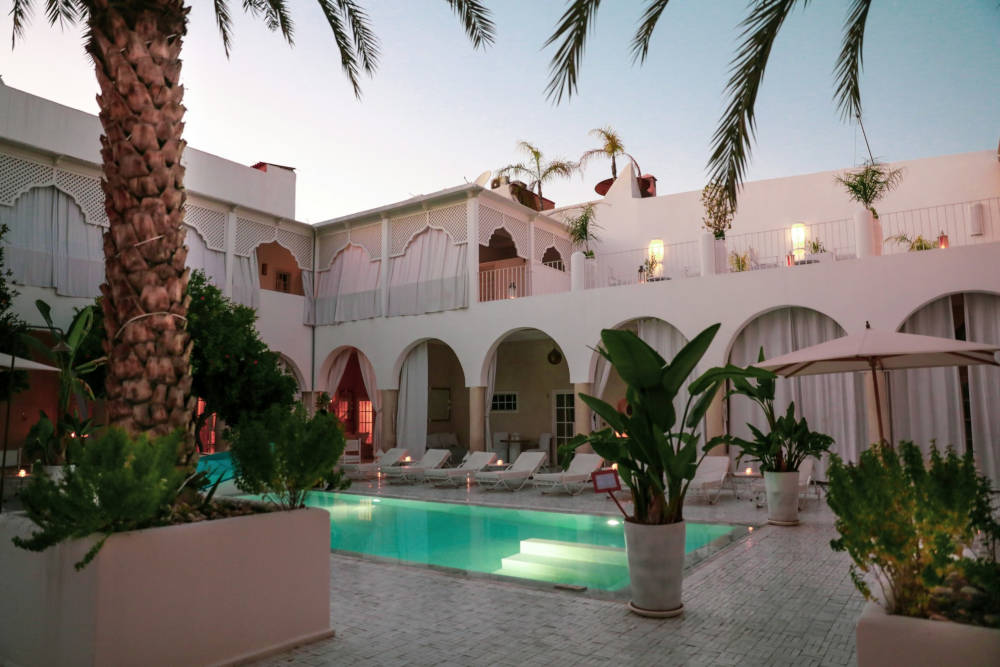
Staying in a riad provides a luxurious experience to admire the traditional Moroccan design and architecture. Riad rooms are well-decorated and fancy, providing a comfortable stay for guests and allowing them to rest well. In riads, you will wake up every morning to the delightful sounds of chirping birds and savor a traditional Moroccan breakfast. Last but not least, since riads are located in the old medina, staying in one will make it easy to get to most of the city’s attractions.

